Farmers fear a post-Brexit trade deal with the US could lead to a flood of cheap dairy imports made to lower standards. So, what’s the inside story?
Britain is on the brink of an invasion. Or so warn UK farmers, who believe a post-Brexit trade deal with the US will inevitably lead to a flood of cheap food imports – forcing a ‘race to the bottom’ on food standards.
The government insists the US will be our biggest ally after Brexit, but the Trump administration has made it clear agriculture would have to be on the table in any negotiations. And while access for chlorine-washed chicken and hormone-treated beef are the biggest priorities for the US farming lobby, it’s got its eyes on dairy too.
Last February, an investigation by Unearthed revealed US dairy exporters were lobbying Trump’s administration to push for the UK to relax rules around somatic cell counts in milk as part of trade negotiations.
Somatic cells are white blood cells that fight infection and a high count is an indicator of bovine mastitis – a painful udder infection in cows. In the EU, milk with a somatic cell count of more than 400,000 per ml is deemed unfit for human consumption. In the US, the legal limit is 750,000.
So should consumers be worried about dairy products made using milk with a high somatic cell count? How else do British dairy farming standards compare with those in the US? And what does the dairy industry think of a UK-US trade deal?
Somatic cell counts above 400,000 per ml “aren’t a food safety issue”, insists Jaime Castaneda, senior VP for trade policy at the US Dairy Export Council (USDEC). “In the US, milk can have a cell count of up to 750,000 per ml because that is the level at which Federal and State regulators have determined is the food safety threshold for SCC,” he adds.
And he’s right that a high cell count “won’t cause damage to anybody but the cow”, admits NFU dairy board chairman Michael Oakes. “But ultimately, you want your cows to be healthy.”
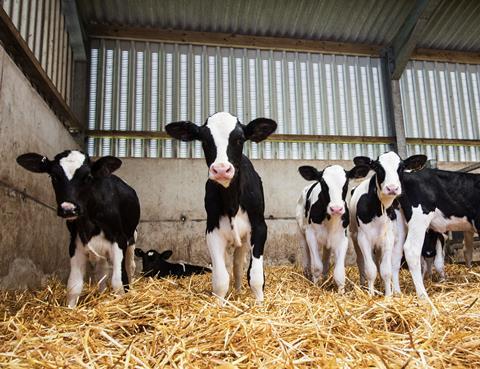
The majority of somatic cells are leukocytes (white blood cells), which are naturally present in milk but increase in numbers as an immune response to a mastitis-causing pathogen. According to AHDB, levels above 200,000 per ml can indicate an infection.
Somatic cell counts are also used by processors as an indicator of milk quality because mastitis has implications for the shelf life of milk as well as “its taste and how well it can be made into other dairy products such as yoghurt or cheese”, says AHDB.
Legal standards on SCC vary widely from country to country. In the UK – as across the rest of the EU – milk with an SCC of more than 400,000 per ml is deemed unfit for human consumption and must be discarded. However, many farmers will be penalised on their milk price if they go above 250,000 per ml, says Oakes. “Our standards are much higher than those in the US,” he claims.
“It won’t cause damage to anybody but the cow but ultimately, you want your cows to be healthy.”
It’s not the only way UK standards differ from those in the US. In the US, dairy farmers are still permitted to use the growth hormone bovine somatotropin (BST) to increase milk production in cows. The drug – which can boost milk production by 15% – has been banned in the EU since 2000 and is also forbidden in Canada, Australia, New Zealand, Japan and Argentina.
“BST is a genetically engineered version of dairy cows’ own growth hormone,” says Compassion in World Farming chief policy advisor Peter Stevenson. “It was banned in the EU because the Scientific Committee on Animal Health and Welfare said it caused substantially and very significantly poorer animal welfare.” According to the committee’s 1999 report, BST increases the risk of mastitis, lameness, indigestion and diarrhoea, as well as the incidence of several diseases.
It’s not the only animal welfare concern in the US, Stevenson says. “In recent years there have been concerns about the growing size of dairy herds in the UK, some of which are creeping up into the low thousands,” he adds. “In the US, herd sizes reach over 30,000. They are just huge enterprises in which it’s hard to believe the animals have any quality of life.”
Castaneda insists the US has high standards of animal welfare on its farms. “The national Dairy Farmers Assuring Responsible Management (FARM) Program was the first livestock animal care programme in the world to be recognised internationally for its industry-leading animal welfare standards,” he notes.
Indeed, the FARM scheme, which covers 98% of US milk supply, was the first to be recognised as compliant with International Organization for Standardization (ISO) Animal Welfare Management standards in 2018. However, there are some notable differences between production methods used in the UK and the US.
Intensive housing systems
According to the 2014 USDA report, tie stalls are the primary housing type for cows for over a third (38.9%) of US dairy operations. “Tie stalls are hardly used at all in the UK,” says Stevenson. “The cows aren’t just indoors, they are tied up.” A further one fifth of US dairy operations (20%) house lactating cows in free-stalls with no outside access, the USDA report shows.
Overall, just 20% of lactating cows in US dairy operations have some access to pasture. That compares with around 80% of UK dairy cows, says Stevenson. “We’ve criticised our industry for having 20% zero-grazing but they compare favourably with the US, where the vast preponderance are indoors all the time.”
There is “clear evidence that zero-grazing systems have a number of problems”, he adds, including higher levels of lameness, mastitis and hock and hoof problems, as well as heightened aggression.
Even when cows are kept outside in the US, they aren’t necessarily pasture-based. Dry lots are particularly prevalent in dairy production in California, Stevenson says. “They are a bit like beef feedlots. So you have thousands of animals on totally barren land,” he adds. “Yes, they are outdoors, but they are utterly awful systems.”
Veal crates – banned in the EU since 2007 – are also still permitted across most of the US. “The situation in the US with farm animal welfare generally is that there is no federal, nationwide legislation on farm animal welfare,” Stevenson notes. “Certain states have banned veal crates and battery cages, but only a handful.”
Perhaps unsurprisingly given the more intensive nature of US farming, US dairy farmers also use a lot more antibiotics than those in the UK. The Veterinary Medicines Directorate (VMD) puts antibiotic use in the UK dairy industry at 17mg/kg in 2017. That compares with 237mg/kg in US dairy and beef cattle, according to the Save our Antibiotics Alliance.
Antibiotic use
With antimicrobial resistance now identified by the World Health Organization as a “serious threat to global public health”, the US has made some efforts to clamp down on antibiotic use on farms. In January 2017, the US Food and Drug Administration banned the use of antibiotics in livestock without a prescription from a vet, and made it illegal to use them purely for fattening purposes.
However, US rules remain significantly behind those in the EU, which recently passed new veterinary medicines legislation that will restrict the use of “medically important antibiotics” in EU livestock production and require the same for imported animal products.
It is one non-tariff barrier US dairy exporters would be keen to see eliminated as part of any trade deal with the UK, suggests Castaneda. “This prohibition on the appropriate use of certain antibiotics presents both an animal welfare and a food safety issue.”
US dairy exporters also want the UK to shift away from EU rules on SCC, which requires imports of dairy products to meet the 400,000 per ml limit, and demands on-farm testing. These rules haven’t stopped the US from exporting dairy to the EU, but a 2017 report by the US trade department noted they were “hindering trade” by adding “unnecessary cost” to the supply chain.
The USDEC is already lobbying the US government to include these issues in future trade negotiations with the UK, Castaneda confirms. “It is our hope the UK will negotiate an agreement with the US that allows for the UK to negotiate based on science and with independency from the EU.”
In 2018, the US exported just $26.6m-worth of dairy to the UK, and $21m of that was ice cream [USDEC]. “The main reason for this is the difficulty in sending any products due to the EU’s regulations,” Castaneda says. If the US got “equal access and non-tariff barriers were removed”, the UK could be a big target market for US cheese, he suggests.
“Antibiotic resistance is a global problem and the UK has led the world in tackling it”
It’s a worry for the British dairy industry, which would struggle to compete with an influx of US dairy imports produced to lower animal welfare standards, warns Judith Bryans, CEO at Dairy UK.
The use of growth hormones like BST is a particular concern, she notes. By using the hormone to increase milk yields, US dairy farmers are “able to produce products at a lower cost, giving them the potential to undercut UK dairy producers and processors.”
British farmers don’t want to lower their own standards in areas like animal welfare and antibiotics, stresses NFU’s Oakes. “Antibiotic resistance is a global problem and the UK has led the world in using antibiotics responsibly, cutting our usage and using the right antibiotics. That benefits everybody.”
So while the British dairy industry would support a trade deal with the US, it “must not come at a cost of lowering our standards or undercutting British dairy produce”, says Bryans.
Stevenson agrees. British dairy isn’t perfect, he stresses. One fifth (20%) of British dairy cows have no access to pasture, and one recent study suggested that on average, 31.6% of UK dairy cows suffer from lameness, which is “awfully high”. Even more “appalling” is the fact 95,000 male dairy calves are shot at birth on UK dairy farms each year. But while some aspects of the British dairy industry are still “troubling from an animal welfare point of view”, most of the problems are “much worse in the US”, he says.
“The UK must uphold its high animal welfare, food safety and environmental standards after Brexit otherwise our farmers be undermined and find it economically impossible to improve.”
It won’t be easy, though. Former trade minister Liam Fox has warned US negotiators simply won’t consider a trade deal unless agriculture is on the table. If the UK burns its bridges with the EU over Brexit, the government might be forced to compromise on food to get the deal it needs for services with its new closest ally.
UK should keep current standards, say shoppers
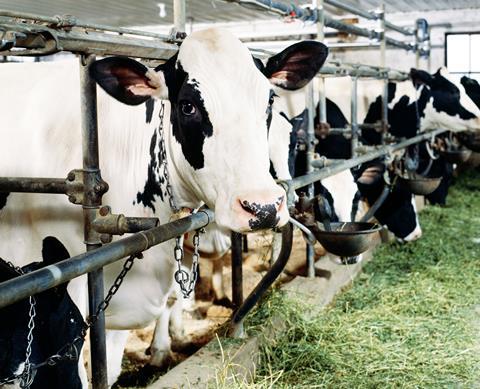
Just 17% of Brits think the UK should review its food safety and animal welfare policies after Brexit, research for The Grocer shows.
A survey of over 2,000 UK consumers by Harris Interactive last month found the majority (46%) believe the UK should keep its current standards, but make up its mind on future policy, while a quarter (26%) think the UK should maintain exactly the same standards as Europe after Brexit.
That’s despite shoppers becoming increasingly worried over the potential impact Brexit could have on their dairy habits.
Almost half (43%) of the consumers surveyed by Harris last month said they were worried the price of dairy products could go up after Brexit.
That’s up from 37% when the same question was asked in 2017.
Rules around somatic cell counts haven’t attracted as much attention as chlorine-washed chicken and hormone-treated beef.
But there would be similar implications for British consumers and farmers if standards were lowered , argues CIWF’s Peter Stevenson. “I’d say the dairy industry faces problems akin to chlorinated chicken,” he says.
And while Brits would likely balk at the idea of eating cheese made with milk from infected cows, that might well be what ends up on shelves after Brexit, warns NFU’s Michael Oakes.
“Food inflation hits people’s pockets and if there is any trade disruption in the short term it could push prices higher,” he says.
“Ultimately the easiest way for the government to keep the risk of food inflation down is to allow food to come in from some countries that don’t have the same high standards. Because ultimately they won’t have as much cost in the supply chain.”
The Dairymen
From lab-made milk to butter shortages, our annual definitive guide to the dairy category is full of insight and analysis on the latest trends shaping the industry. This year, The Dairymen will explore how the UK’s exit from the EU will affect British dairy, and ask how the industry can make sure it is prepared to tackle the supply chain pressures it might bring, as well as making the most of potential new export markets.
Gold and Platinum members will be able to download The Dairymen from 14 September. Subscribe now. We’ll be publishing insight and analysis from The Dairymen online throughout September and October.

View full Profile












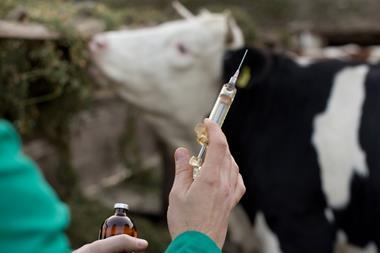
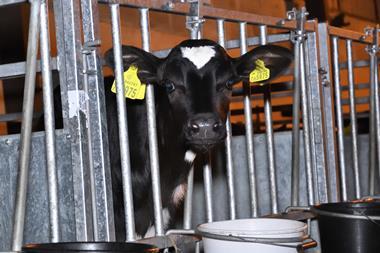
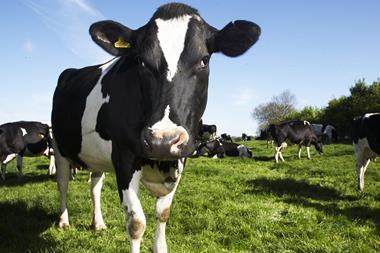

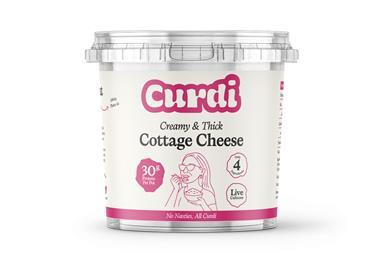







No comments yet